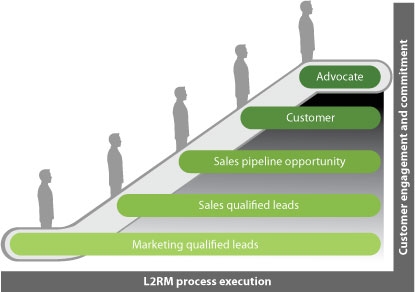Forget The Funnel! Introducing A New Metaphor For Lead To Revenue Process Management
I’ve seen too many lead-to-revenue initiatives underperform because insufficient attention was devoted to process. And, I’ve seen an equal number stall because the attempt to document the current state and define the future state leads to analysis-paralysis. It’s not fair to say that marketing organizations run their demand management completely without process. What most marketing organizations don’t have, however, is a consistent, end-to-end process to manage a single customer from lead origination to purchase, which is the heart of lead-to-revenue management. And for that, I blame the funnel. 
The “lead funnel” (the universal model for demand management) gets well-deserved celebrity for giving B2B marketers a metaphor to communicate the relevance of marketing activities to revenue production. The funnel’s clearly defined stage gates (MQL, SQL, SAL, etc.) give marketing the basis to collaborate with sales on lead management. The funnel makes it easy to snapshot the health of the end-to-end pipeline. But, as a construct for thinking about the lead-to-revenue process, the funnel fails spectacularly. In this blog, I'll introduce an alternative metaphor, the Lead-to-Advocate Escalator. But, first, here’s what wrong with the funnel (and funnel derivatives like the waterfall).
The funnel is passive. The funnel supports the "numbers game" theory of sales and marketing; the more leads you put into the top of the funnel, the more deals that will come out – as if there is a natural process (what, gravity?) that controls the physics of the funnel. B2B marketers are increasingly aware they must deploy complex multi-step nurturing programs to engage buyers and deliver more mature, better qualified leads to sales. It takes work to move a buyer from interested to committed to customer.
The funnel is blind to the buyer’s journey. Your customers kick-start their buying journeys with a web search. They seek information sources that help them envision outcomes, define buying criteria, and shape decision-making processes – all before before engaging with your sales team. The explosion of digital and social media is disintermediating B2B sales people from B2B buyers. For many product categories, buyers now put off talking with sales people until they are ready for price quotes. Savvy marketing execs realize this dynamic is changing the role of the B2B marketer. Marketing now owns a much bigger piece of the lead-to-revenue cycle for each deal. B2B marketers must take responsibility for engagement with potential customers through most of the buying process.
And that illuminates the funnel’s fatal flaw as a model for building L2RM process.
The funnel doesn’t care about each individual lead. The funnel only cares about the aggregate number of leads at each pipeline stage, and the conversion rates between the stages. Engaging, throughout the customer’s buying cycle, requires completely different thinking.
It’s not about managing hundreds or thousands of ‘leads’ through a process of sequential attrition until tens or hundreds of deals emerge. The goal is to to manage each single lead so that you maximize your chance of a successful revenue event. And then you can repeat that process hundreds or thousands of times.
Don’t throw away your funnels. The funnel metaphor is still a valid construct for lead-to revenue performance management. But, when you’re developing your lead to revenue processes, it’s time for a new metaphor – the lead-to revenue escalator, powered by the energy of marketing. Through a series of coordinated marketing and sales efforts (the energy) each potential customer’s level of engagement escalates from awareness to interest, to consideration, to commitment and perhaps to advocacy. Marketing execs need to focus process management efforts on the tasks that have the most impact on moving prospective customers up the escalator.
